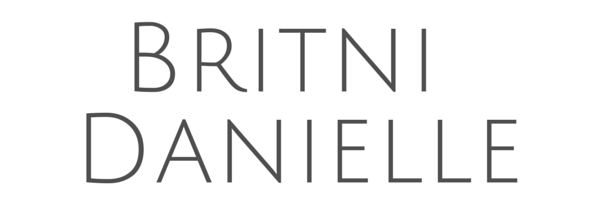I’m in full-fledged promotion mode trying to get my new ebook, Break Out of Your Box, in as many hands as possible (do you have your copy?). And while I’m trying not to spam the hell out every, single social network I’m apart of, while still Facebooking and tweting about it multiple times per day, I’ve learned a few things about writing and launching an ebook on your own (and I’ve learned even more since writing & publishing multiple successful novels).
Let’s just get this out of the way—it’s not easy.
If you think whipping up a high-quality, engaging ebook is something you can just throw together one evening, then you’re either far too amazing for my advice, or you’re on the verge of unleashing some subpar work.
Entering the process I figured I’d simply spend a weekend or two writing the book in WORD, export it to PDF, design my own cover, and viola! Done.
Yeah…not so much.
I will admit this, though: writing the book was the easiest part of the journey.
Although the writing process is very different, and even very difficult–for most of us–so far, actually getting the words on the page was the least difficult part of the process for me.
So what helped?
Tip # 1: Use an outline
Though I rarely—and when I says rarely, I mean almost never—write with an outline, actually having a basic framework for the book helped me tremendously.
As a matter of fact, had I tried to write Break Out of Your Box without a proper chapter outline I would have never finished the book, and I would gotten caught somewhere in the metaphorical weeds.
Having an outline of exactly what I wanted to discuss in each chapter not only helped me organize my draft, but it also helped me stay focused, and most importantly, keep writing.
Before you sit down to write, think about what you want to convey in your ebook.
Do you want to teach people about maximizing the use of their smart phone? Do you want to help folks improve their blogging or SEO skills? Do you want to give some sort of advice?
Figure out the pupose of your book, and then write an outline that includes the topics you’d like to cover. You can always edit your list, combine sections, or get rid of things all together.
But in order to have a successful book, it’s better to start with the end in mind.
Tip # 2: Have someone else read your draft
I’ve seen a lot of poorly written, error-filled self-published work over the years. And I’m not just talking free books floating around the ‘net, either.
For example, years ago, I read the popular street lit novel B-More Careful and one of the characters was beaten down by someone wielding a basketball bat. Uhh, yeah.
An error-riddled book can prevent many from taking you seriously—no matter how good the information–so having extra pairs of eyes reading your book before it’s released can really help to improve the quality of your work.
I should know. Last Friday, I soft-launched Break Out of Your Box to my #GOALdiggers Project Facebook group. And I’m happy I did because some people caught a few errors (formatting, grammar, etc.) in the book and I was able to correct them (I hope) before I sent the book to the masses.
Errors happen. And after you’ve read your book so many times you can’t see straight anymore, you need folks who will catch your mistakes, be honest about your draft, and give you a few pointers about how you can make it better.
 Tip # 3: Get your book professionally designed
Tip # 3: Get your book professionally designed
Last year, after I wrote my ebook, I figured I would design it myself. I read lots of HOW-TO guides about ebook formation, cover design, and how to make my book look ultra-professional for free.
While I have no doubt many people are able to pull this off, I wasn’t. And getting lost in the ins-and-outs of design nearly kept me from putting my book out.
And let’s face it: people really do judge books by their covers. And a beautifully designed book will help people take you EVEN MORE seriously than a quickly thrown together PDF.
But great design doesn’t have to cost you a fortune. You can hire a student looking to bulk up their portfolio, try out Fiverr, or you can search Google for ebook designers. Whatever route you take, unless you are a graphics wiz and have the patience of Job…GET SOMEONE TO DESIGN IT FOR YOU!
After months of trying to figure it out on my own, I did a Google search and found a fabulous ebook designer from Australia. Karen of That’s Creative Book Design listened to the description of my project, delivered a beautifully designed book, and worked EXTREMELY fast (I promise this isn’t a commercial and that’s not an affiliate link. I just loved working with her).
Knowing that all I needed to concentrate on was delivering a well-written book, and getting it into as many hands as possible, allowed my anxiety level to drop tremendously.
Writing an ebook can be a daunting, but extremely rewarding, task. An ebook can help you establish yourself as an expert in your field, grow your readership, or simply satisfy your creative urge, so if you’re thinking about writing one—write it!
What have you got to lose?
#


I’m excited for you. Thanks for writing the book, this great post and for being an example for those of us coming behind you.
I love these tips! so very helpful and believable because you *just* did this. I anticipate using the information I learned. Thanks again for this.
Hey Elizabeth, I’m glad you found them to be helpful and I’m glad you’re going to write a book!
Congrats on the launch of your ebook Britni! I’ve been thinking A LOT about writing one of my own. You are such an inspiration, thanks for your advice, it is definitely going to help me if no one else. 🙂
Thanks Jessica! If you’ve been thinking about writing an ebook, plan out some chapters & get to writing!
I downloaded my copy of your e book last week, and I can’t wait to read it! Work has demanded much of my time this week, but this weekend, its on! You’ve inspired me with your ‘what have you got to lose?’ advice. I’m the only one holding myself back. Congrats on the release of your book!
Just downloaded it, Britni. I also tweeted it out to my follwers! ; ) Can’t wait to read it for myself and then share some more!